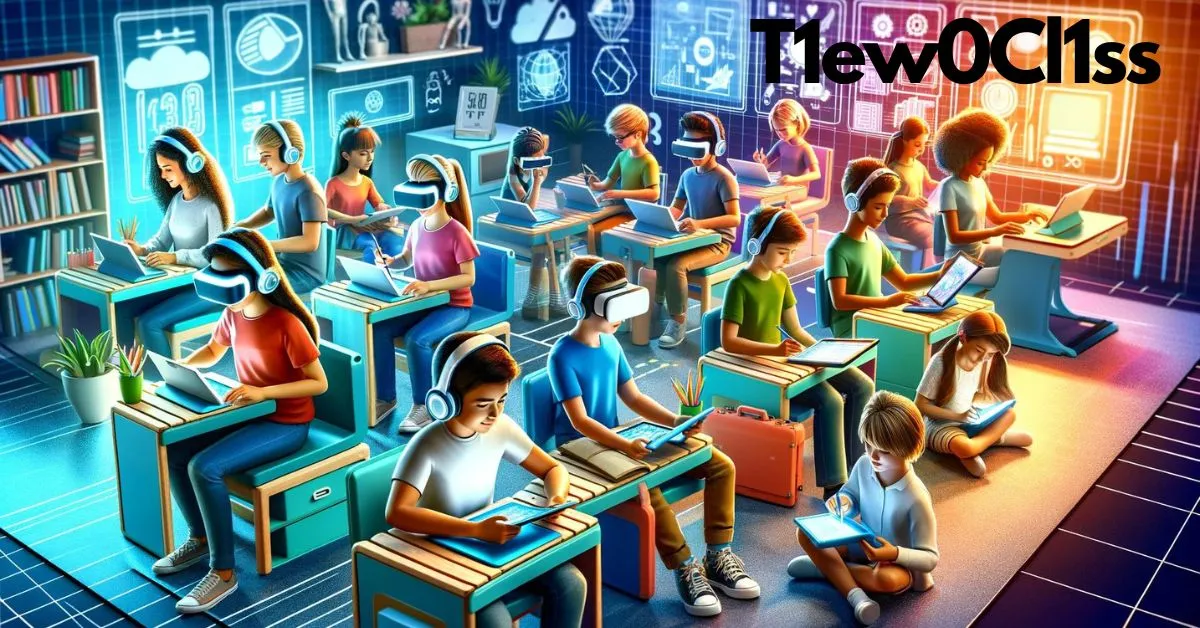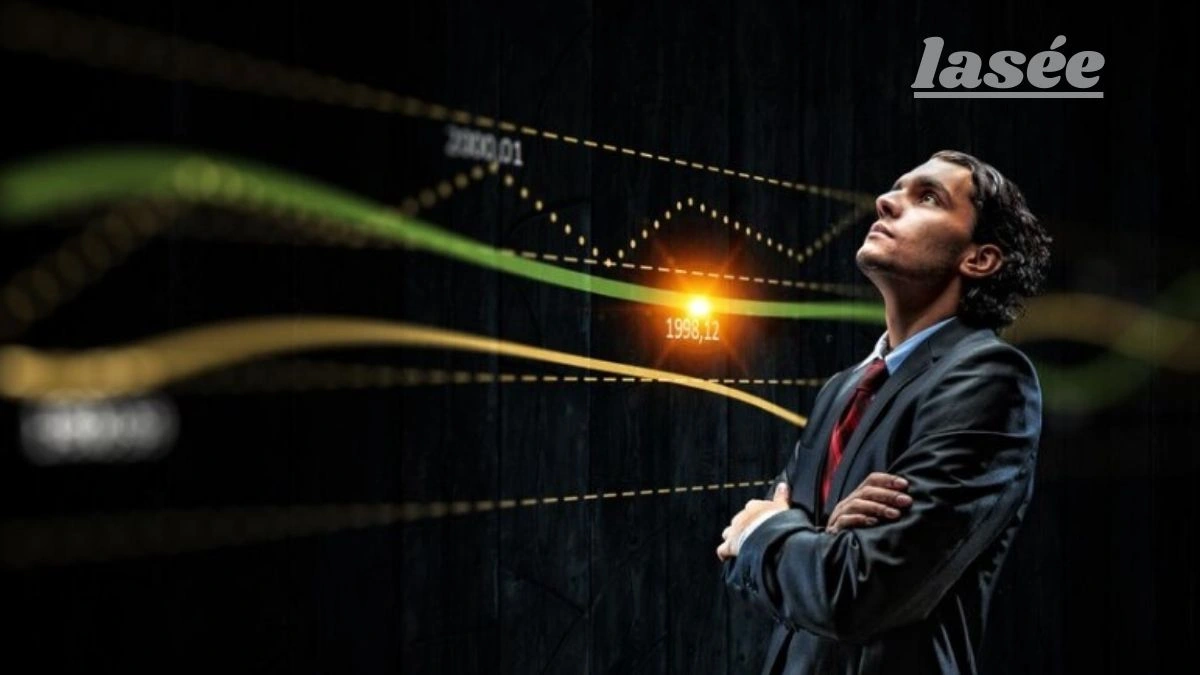In the evolving landscape of education, where digital transformation continues to reshape traditional learning paradigms, T1EW0N CL1SS emerges as a pioneering force, revolutionizing how knowledge is imparted and accessed globally. This innovative platform represents a convergence of technology and pedagogy, aiming to bridge gaps in educational accessibility, enhance learning outcomes, and foster a more inclusive educational environment.
The Genesis of T1EW0N CL1SS
T1EW0N CL1SS was conceived as a response to the growing demand for flexible, personalized learning experiences that transcend geographical boundaries. Founded by a team of educators and tech enthusiasts, its inception aimed to leverage cutting-edge technologies such as artificial intelligence (AI), augmented reality (AR), and machine learning (ML) to create a dynamic educational ecosystem.
The platform’s developers recognized the need for a comprehensive solution that not only digitizes traditional classroom practices but also enhances them with interactive, adaptive learning tools. Their vision was to empower educators and learners alike with tools that cater to diverse learning styles and preferences, thereby democratizing access to quality education.
Key Features and Functionality
1. Personalized Learning Paths
T1EW0N CL1SS employs AI algorithms to analyze each learner’s strengths, weaknesses, and learning pace. This data-driven approach allows the platform to generate personalized learning paths, ensuring that every student receives content and activities tailored to their individual needs. Whether a student requires additional challenges or extra support in specific areas, T1EW0N CL1SS adapts in real-time to optimize learning outcomes.
2. Interactive Virtual Classrooms
Central to T1EW0N CL1SS’s success is its immersive virtual classroom environment. Utilizing AR and VR technologies, students can participate in lifelike simulations, collaborative projects, and virtual field trips that transcend physical constraints. This interactive approach not only enhances engagement but also fosters critical thinking, problem-solving, and communication skills essential for success in the 21st-century workforce.
3. Real-Time Assessments and Feedback
Gone are the days of waiting for exam results or teacher feedback. T1EW0N CL1SS integrates real-time assessment tools that provide instant feedback on assignments, quizzes, and exams. This timely feedback not only helps students gauge their progress but also allows educators to adjust instructional strategies based on real-time data, thereby maximizing teaching efficiency and student learning outcomes.
4. Global Collaboration and Cultural Exchange
In an increasingly interconnected world, T1EW0N CL1SS fosters global collaboration among students and educators. Through virtual exchange programs and multicultural projects, learners can engage with peers from diverse backgrounds, gaining valuable insights into different cultures, perspectives, and global issues. This cross-cultural exchange not only enriches the learning experience but also prepares students to navigate a globally interconnected society.
Implementation and Impact
1. Accessibility and Inclusivity
One of T1EW0N CL1SS’s primary goals is to eliminate barriers to education. By providing anytime, anywhere access to high-quality educational resources, the platform empowers learners in remote or underserved communities to pursue their academic aspirations. This inclusivity extends to learners with disabilities, as T1EW0N CL1SS is designed to accommodate diverse accessibility needs, ensuring that all students have equal opportunities to thrive.
2. Empowering Educators
Educators play a pivotal role in the T1EW0N CL1SS ecosystem. The platform equips teachers with tools for curriculum development, lesson planning, and student assessment, streamlining administrative tasks and enabling educators to focus more on personalized instruction and mentorship. Professional development opportunities and collaborative forums further empower educators to enhance their teaching practices and adapt to evolving educational trends.
3. Measurable Learning Outcomes
The effectiveness of T1EW0N CL1SS is underscored by its ability to deliver measurable learning outcomes. Through data analytics and performance metrics, educators and administrators can assess the impact of the platform on student achievement, retention rates, and overall academic progress. This evidence-based approach not only validates the efficacy of T1EW0N CL1SS but also informs continuous improvements and refinements to optimize educational outcomes.
Challenges and Future Directions
While T1EW0N CL1SS represents a significant advancement in educational technology, its implementation is not without challenges. Issues such as digital equity, data privacy, and the need for ongoing technical support require careful consideration and proactive management. Furthermore, as technology continues to evolve, T1EW0N CL1SS must remain agile and responsive to emerging trends and pedagogical research.
Looking ahead, the future of T1EW0N CL1SS holds immense promise. As the platform expands its user base and enhances its capabilities, it has the potential to redefine education on a global scale. Continued innovation in AI, AR, and personalized learning technologies will further enrich the educational experience, empowering learners to succeed in an increasingly complex and interconnected world.
Conclusion
In conclusion, T1EW0N CL1SS stands as a beacon of innovation and inclusivity in the realm of education. By harnessing the power of technology to personalize learning, foster global collaboration, and empower educators, the platform not only addresses current educational challenges but also paves the way for a more equitable and sustainable future. As T1EW0N CL1SS continues to evolve, its impact on education is poised to be transformative, ensuring that learners worldwide have access to the knowledge and skills they need to thrive in the 21st century and beyond.
FAQs
1. What is T1EW0N CL1SS? T1EW0N CL1SS is an advanced educational platform that integrates cutting-edge technologies such as artificial intelligence (AI), augmented reality (AR), and machine learning (ML) to enhance the learning experience. It offers personalized learning paths, interactive virtual classrooms, and real-time assessments to cater to diverse learning needs.
2. How does T1EW0N CL1SS personalize learning for students? T1EW0N CL1SS uses AI algorithms to analyze each student’s learning patterns, strengths, and weaknesses. Based on this analysis, it generates personalized learning paths that adapt in real-time to optimize learning outcomes. This ensures that students receive content and activities tailored to their individual needs.
3. What are the key features of T1EW0N CL1SS? The key features of T1EW0N CL1SS include:
- Personalized learning paths based on AI analysis.
- Interactive virtual classrooms with AR and VR technologies.
- Real-time assessments and feedback.
- Global collaboration opportunities through virtual exchange programs.
- Tools for educators to streamline curriculum development and assessment.
4. How does T1EW0N CL1SS support global collaboration among students? T1EW0N CL1SS facilitates global collaboration by enabling students to engage in virtual exchange programs and multicultural projects. Through these initiatives, students can interact with peers from different parts of the world, gaining insights into diverse cultures and perspectives.
5. What impact does T1EW0N CL1SS have on accessibility to education? T1EW0N CL1SS aims to democratize access to education by providing anytime, anywhere learning opportunities. It caters to learners in remote or underserved communities, as well as students with disabilities, by offering inclusive features and ensuring equal access to educational resources.
6. How does T1EW0N CL1SS benefit educators? Educators using T1EW0N CL1SS have access to tools for curriculum development, lesson planning, and real-time student assessment. The platform streamlines administrative tasks, allowing educators to focus more on personalized instruction and mentorship. Professional development opportunities further enhance their teaching practices.
7. Is T1EW0N CL1SS secure in terms of data privacy? Yes, T1EW0N CL1SS prioritizes data privacy and security. It adheres to stringent data protection policies and implements measures to safeguard user information. Users can be assured that their data is handled responsibly and in accordance with privacy regulations.
8. How does T1EW0N CL1SS measure learning outcomes? T1EW0N CL1SS uses data analytics and performance metrics to measure learning outcomes. Educators and administrators can assess student achievement, retention rates, and overall academic progress through comprehensive data insights. This evidence-based approach informs continuous improvements to optimize educational outcomes.
9. What are the future plans for T1EW0N CL1SS? T1EW0N CL1SS plans to continue innovating in educational technology, expanding its capabilities, and enhancing user experience. Future developments may include further integration of AI and AR technologies, expansion of global collaboration initiatives, and continuous improvements based on user feedback and technological advancements.
10. How can institutions and educators get started with T1EW0N CL1SS? Institutions and educators interested in adopting T1EW0N CL1SS can explore partnership opportunities and access resources through the platform’s official website. Training and support are provided to ensure a smooth integration into existing educational practices, fostering a transformative learning environment.


 Fashion6 months ago
Fashion6 months ago
 Entertainment8 months ago
Entertainment8 months ago
 Tech8 months ago
Tech8 months ago
 Games6 months ago
Games6 months ago
 Blog8 months ago
Blog8 months ago
 Tech6 months ago
Tech6 months ago
 Entertainment8 months ago
Entertainment8 months ago
 Entertainment8 months ago
Entertainment8 months ago
